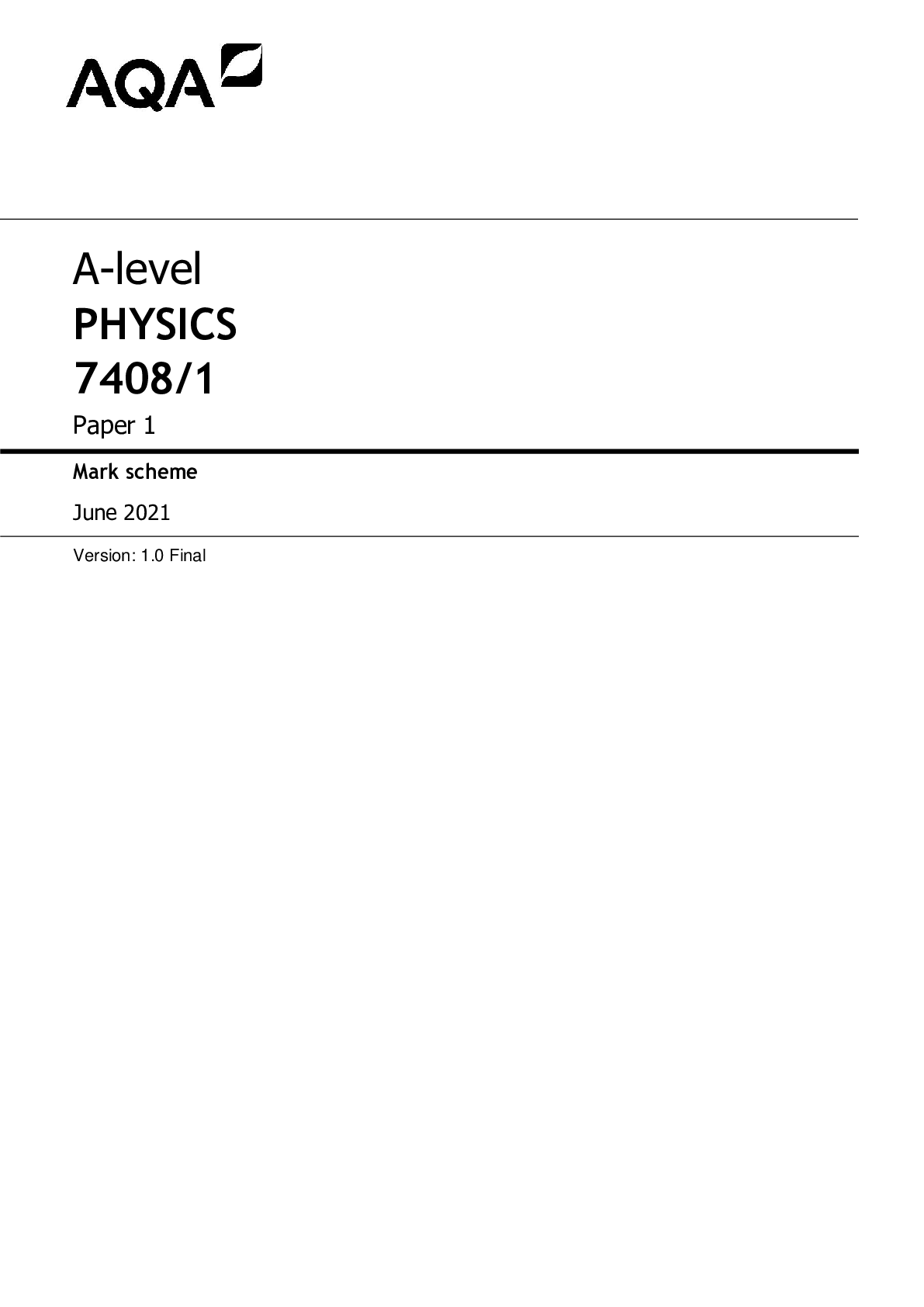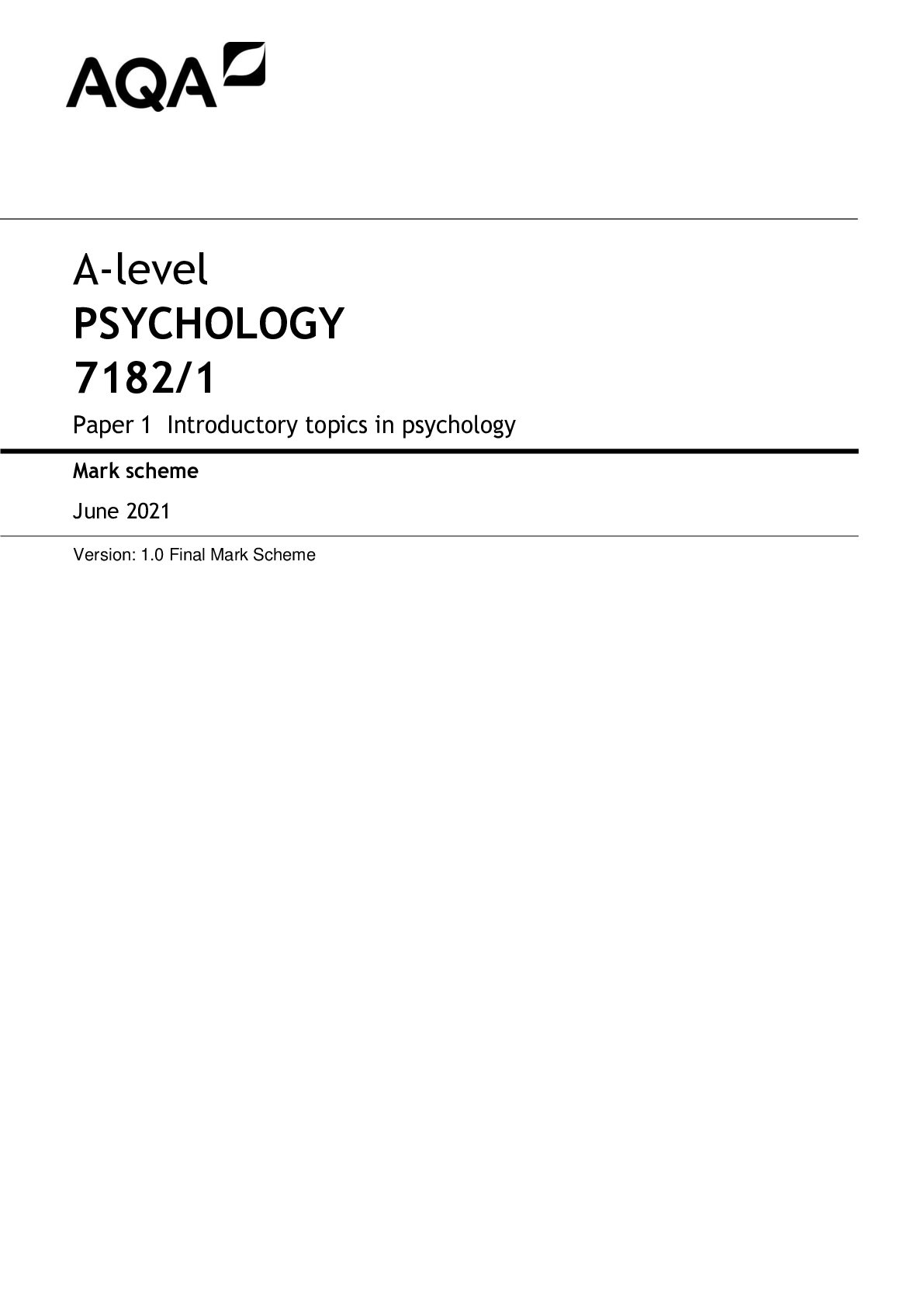Chemistry > AQA Questions and Marking Scheme > AQA A-LEVEL CHEMISTRY 7405/1 Paper 1 Inorganic and Physical Chemistry Version: 1.0 Final Mark scheme (All)
AQA A-LEVEL CHEMISTRY 7405/1 Paper 1 Inorganic and Physical Chemistry Version: 1.0 Final Mark scheme June 2021
Document Content and Description Below
AS and A-Level Chemistry Mark Scheme Instructions for Examiners 1. General The mark scheme for each question shows: the marks available for each part of the question the total marks avail... able for the question the typical answer or answers which are expected extra information to help the examiner make his or her judgement and help to delineate what is acceptable or not worthy of credit or, in discursive answers, to give an overview of the area in which a mark or marks may be awarded. The extra information in the ‘Comments’ column is aligned to the appropriate answer in the left-hand part of the mark scheme and should only be applied to that item in the mark scheme. You should mark according to the contents of the mark scheme. If you are in any doubt about applying the mark scheme to a particular response, consult your Team Leader. At the beginning of a part of a question a reminder may be given, for example: where consequential marking needs to be considered in a calculation; or the answer may be on the diagram or at a different place on the script. In general the right-hand side of the mark scheme is there to provide those extra details which might confuse the main part of the mark scheme yet may be helpful in ensuring that marking is straightforward and consistent. The use of M1, M2, M3 etc in the right-hand column refers to the marking points in the order in which they appear in the mark scheme. So, M1 refers to the first marking point, M2 the second marking point etc. 2. Emboldening In a list of acceptable answers where more than one mark is available ‘any two from’ is used, with the number of marks emboldened. Each of the following bullet points is a potential mark. A bold and is used to indicate that both parts of the answer are required to award the mark. Alternative answers acceptable for a mark are indicated by the use of OR. Different terms in the mark scheme are shown by a / ; eg allow smooth / free movement. 3. Marking points Marking of lists This applies to questions requiring a set number of responses, but for which students have provided extra responses. The general ‘List’ principle to be followed in such a situation is that ‘right + wrong = wrong’. Each error / contradiction negates each correct response. So, if the number of error / contradictions equals or exceeds the number of marks available for the question, no marks can be awarded. [Show More]
Last updated: 1 year ago
Preview 1 out of 33 pages
 (1) (1).png)
Reviews( 0 )
Document information
Connected school, study & course
About the document
Uploaded On
Jun 20, 2022
Number of pages
33
Written in
Additional information
This document has been written for:
Uploaded
Jun 20, 2022
Downloads
0
Views
50


.png)


.png)

.png)
.png)
.png)
.png)



